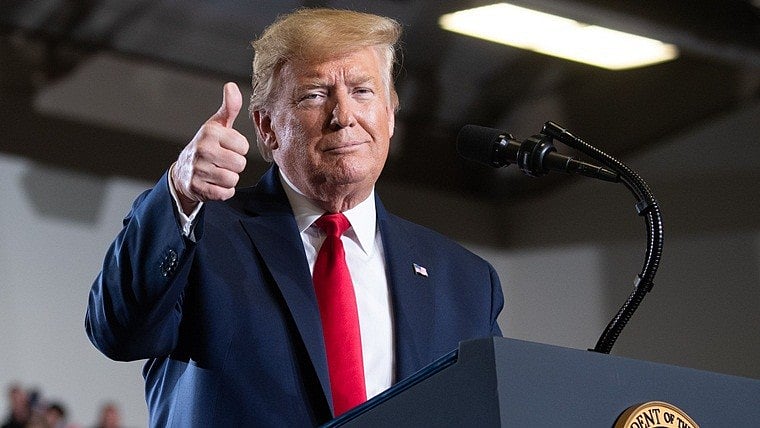Washington’s aggressive 25% tariff on all imports of foreign-made cars from April 2, the date President Donald Trump has labelled “liberation day”, has challenged its trading partners to respond with equal severity, even though retaliation carries its own cost. Exposure to these levies would be immense for capitals from Ottawa to Tokyo and Brussels to Beijing, since nearly half the number of finished cars in the U.S. are imported, and those assembled domestically contain 60% of parts made overseas. The auto levy has dealt an additional blow to Washington’s three largest trading partners—Canada, Mexico and China—who were, in early March, hit with substantial duties (over accusations of opioid fentanyl flows into the U.S.) that commentators say are among the highest in decades.
In a not-so-oblique reference on Friday to the intensifying trade war, President Xi Jinping of China, the world’s second-largest economy, who has recently cast himself as a strong champion of globalisation and the multilateral order, exhorted influential global business leaders on the perils of building trade barriers, decoupling and disruption of industrial supply chains. Mark Carney, Prime Minister of Canada, which has been gripped by a strong wave of nationalist fervour in reaction to President Trump’s frequent threat of annexation, has vowed a strong response against the auto tariffs. Mr Carney has also declared Canada’s old relationship with the southern neighbour as history and hinted at a renegotiation of the US-Mexico-Canada Agreement (USMCA) finalised during President Trump’s first term. A measure of vulnerability from the tariff impact on Mexico, which is rapidly sliding towards recession, is the country’s position as the largest source of US car imports, employing about 1 million people in the automobile sector and accounting for 4% of GDP.
The European Union (EU), which imposed a duty worth 26 billion euros following February’s steel and aluminium tariffs, is devising further retaliation. However, Brussels has limited room for manoeuvre, given that the bloc’s exports far outweigh its imports from the US. An important exception to this scenario is Washington’s predominance in exports of services to the bloc. The EU is, thus, actively considering the option to invoke the emergency Anti-Coercion Instrument (ACI). Brussels can wield this trade defence tool to restrict trade in services once it has determined that a country was slapping tariffs on goods so heavy as to force a change in policy. President Trump’s coercive tariffs on Denmark to handover Greenland and pressuring the EU to halt enforcement against US big tech firms would qualify for action under this device. The ACI may likewise be used to withdraw the intellectual property rights of big tech firms and deny market access to banking, insurance and other financial services.
That leaves Britain among the few traditional US partners to opt to eschew retaliation against auto tariffs in the hope that negotiations might bring deliverance from the deepening uncertainty around trade policy.
As the average US import tariffs during President Trump’s second term have already risen about twice the volume in his first term, the world is watching closely the “reciprocal tariffs” set to be unleashed on “liberation day”. This is the country-by-country levy American trade investigators determine, considering the prevailing tariff, tax, regulation and subsidies landscape, which President Trump puts plainly as ‘whatever you charge, I’m charging’ or an eye-for-an-eye action.
The potential fallout from this unambiguously transactional approach is, indeed, a legitimate concern for India. Last year, the country registered a $45.7 billion trade surplus with the US, its biggest export destination, and the government is eyeing a bilateral trade deal to ward off the threat of punitive tariffs.
Prime Minister Narendra Modi’s government has pitched huge opportunities from the world’s fifth-largest economy, its vast and heterogeneous market, and rapid growth to demand substantial tariff reductions from European countries. But President Trump has set his sights firmly on New Delhi slashing its own steep tariff barriers, among the world’s toughest and, at any rate, significantly heavier in the crucial agriculture sector than what the US levies. President Trump also insists on higher Indian purchases of oil and gas as well as military hardware as the price for deepening cooperation.
Negotiations in such areas could be fraught, as the government tries to balance the national self-interest with the imperatives of navigating a turbulent global environment. An important pointer to the future direction of bilateral relations is the government’s decision last week to scrap the 6% tax on online advertisement known as the Google tax, designed in 2016 to target the earnings of global firms that did not have a physical presence in India. The pharmaceutical and apparel industries are bracing themselves for what might prove a turning point in the country’s domestic business environment consequent to the widely anticipated announcements this week on Washington’s latest ‘America First’ priorities.
Global businesses and supply chains have been grappling with uncertainties from the realignment of Washington’s relations with trade partners since the beginning of President Trump’s second term. For them, the April 2 announcement will hopefully bring some clarity.
